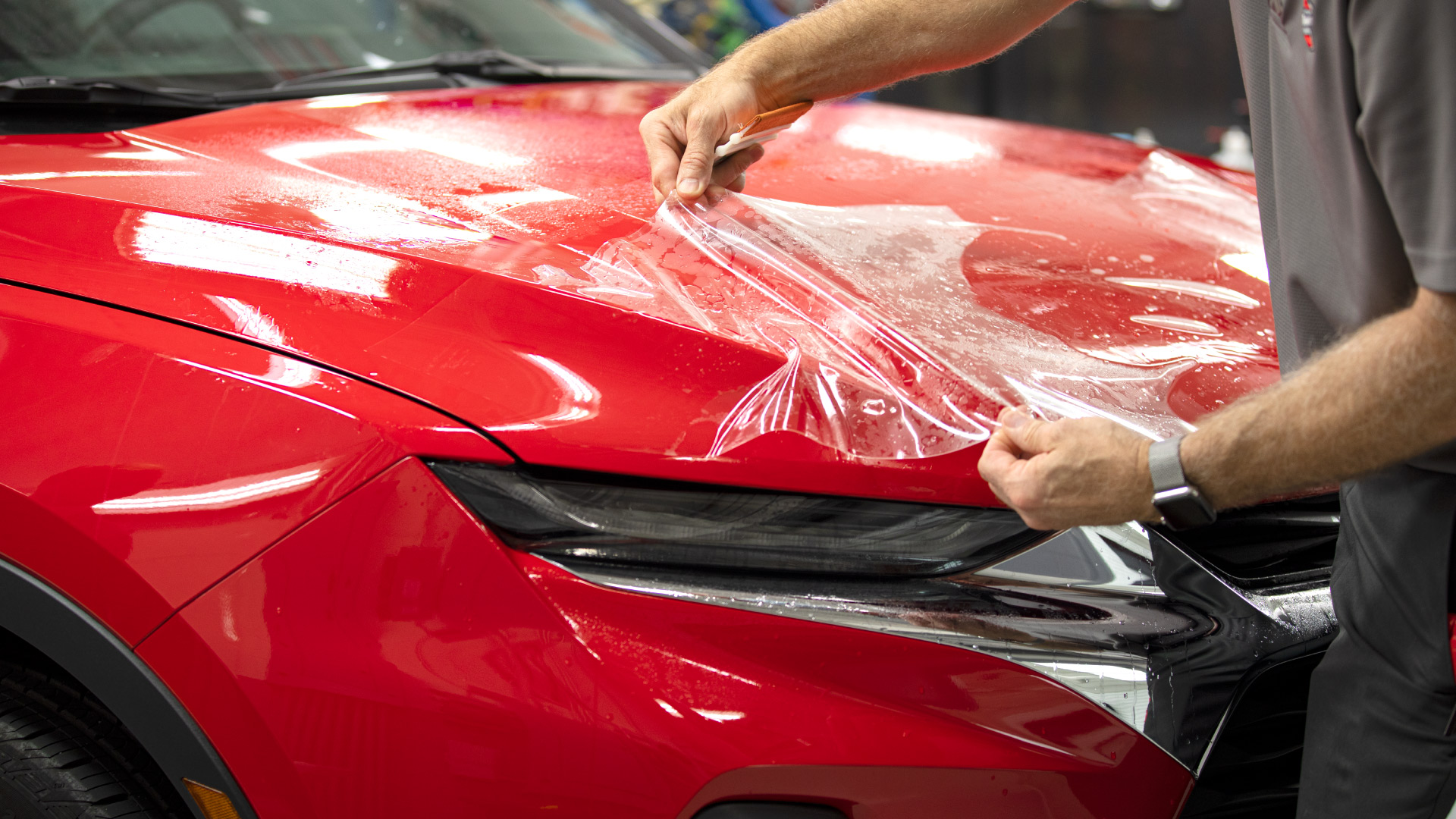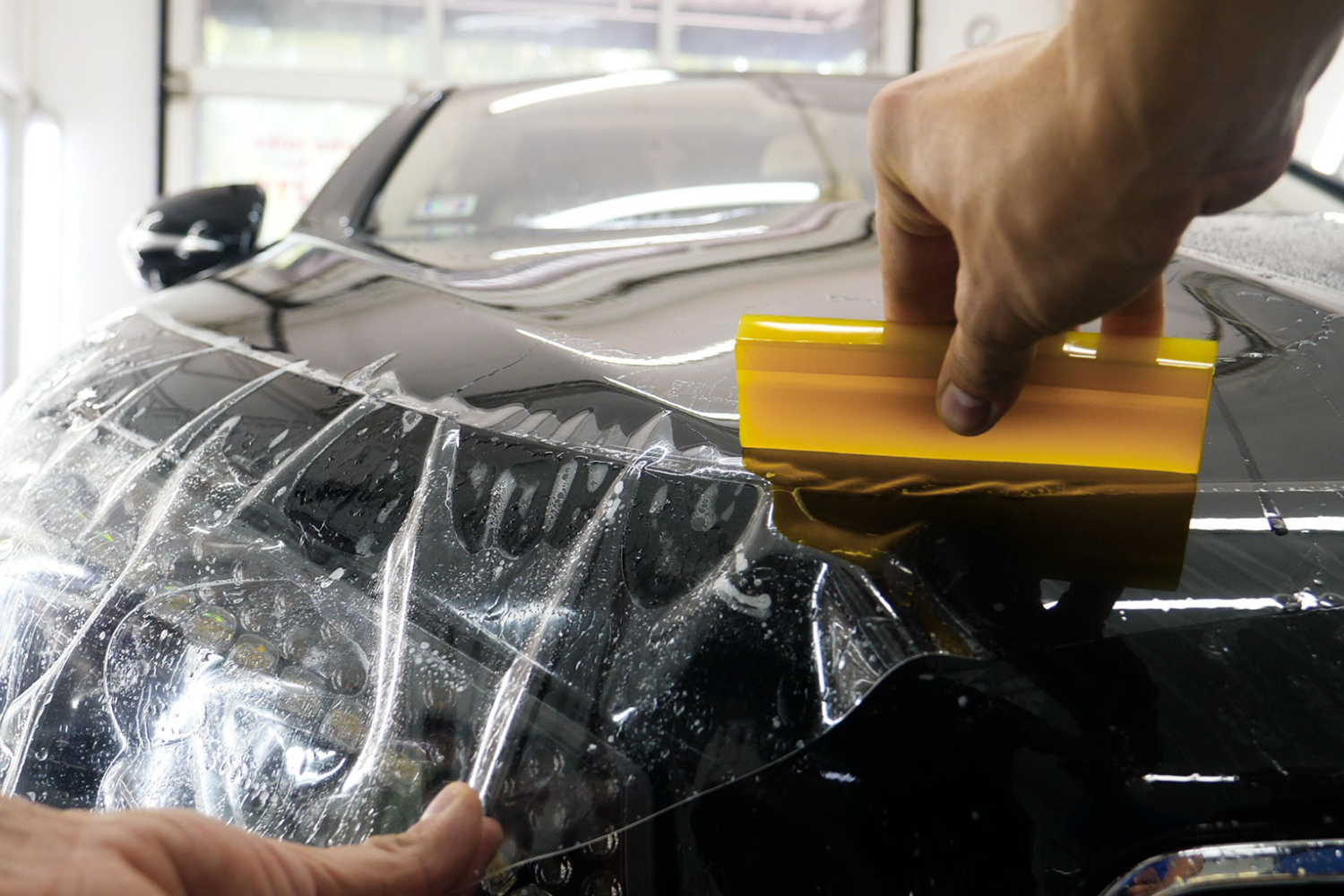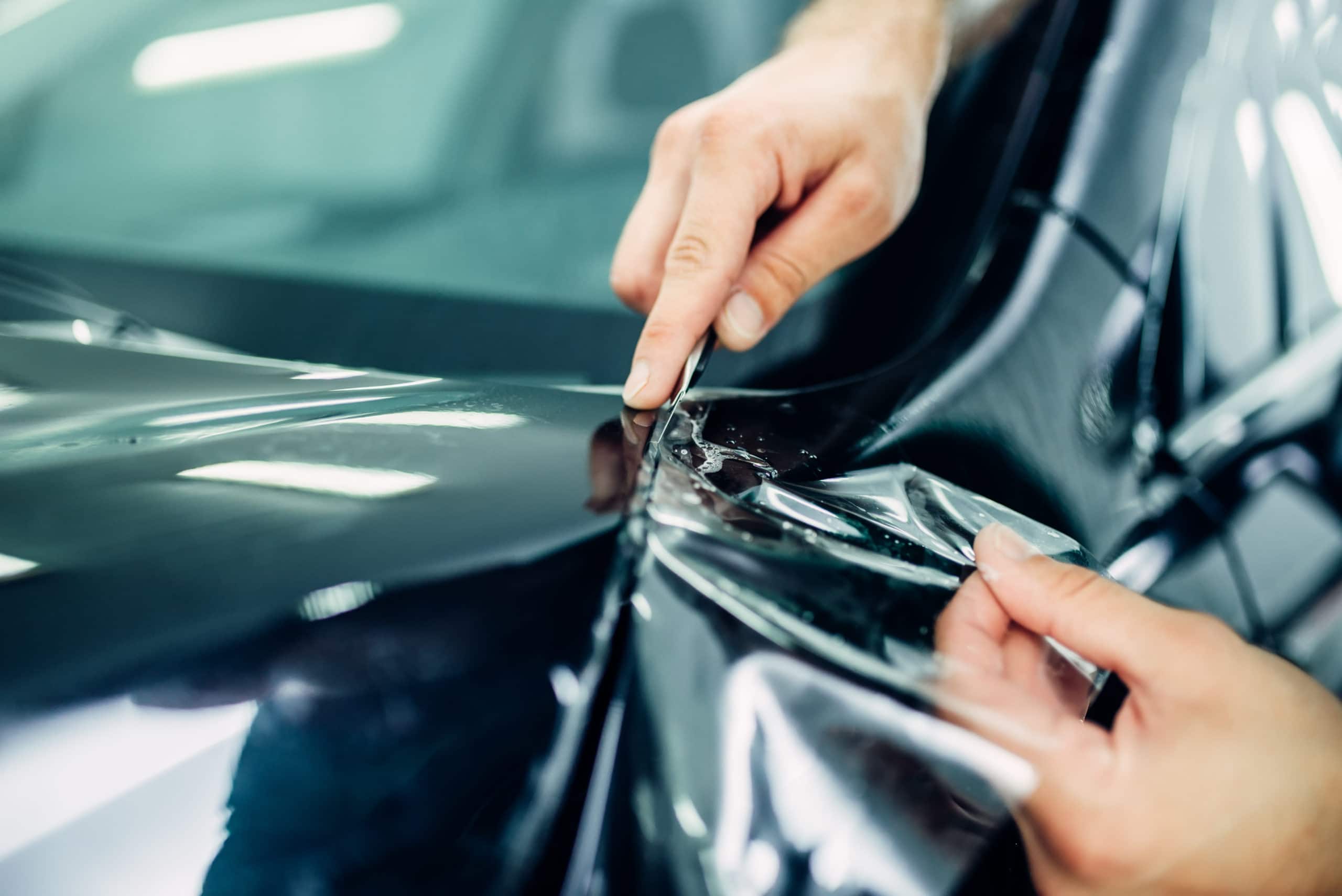Just How Paint Protection Film Safeguards Your Car from Scratches and Damage
Just How Paint Protection Film Safeguards Your Car from Scratches and Damage
Blog Article
The Importance of Paint Security Film in Preserving Your Car's End up
Paint Security Movie (PPF) arises as a crucial player in this sector, supplying an almost invisible guard that combats the daily dangers of the road. This leads us to ponder-- what makes PPF an important option for cars and truck fanatics and owners alike?
Understanding Paint Security Film
Paint protection movie (PPF), commonly described as a "clear bra," is a thermoplastic urethane movie put on the repainted surface areas of vehicles to protect them from damages triggered by rocks, bugs, and minor abrasions. This ingenious movie is carefully engineered to make certain optimum clarity and is developed to be virtually unseen when correctly applied. It acts as a sacrificial layer, taking in the influence of day-to-day dangers, consequently preserving the lorry's pristine look.
PPF is commonly made up of several layers, each offering a details function. The top layer is a clear layer that supplies a glossy finish while boosting UV resistance, protecting against the movie from yellowing over time.

Benefits of Using PPF
While maintaining the excellent appearance of an automobile is a priority for lots of owners, using paint protection film (PPF) offers a number of important benefits. PPF acts as a robust obstacle, securing the automobile's paint from road particles, rocks, and small abrasions that can occur throughout regular driving.
PPF supplies a protective layer that mitigates the results of these aspects, decreasing paint fading and preserving a glossy surface over time. Additionally, PPF is made to be practically invisible, guaranteeing that the original shade and style of the car remain plainly shown without change.
In addition, the self-healing residential properties of sophisticated PPF add to its allure. When subjected to heat, the movie can fix small scrapes and swirl marks, ensuring the vehicle preserves a flawless outside. Jointly, these advantages make PPF an essential device for car preservation.
How PPF Functions
To comprehend the efficiency of paint protection movie (PPF), it is vital to delve into its make-up and application procedure. PPF is made up of a multi-layered product, usually polyurethane or a similar polymer. This Our site clear movie is developed to absorb the impact from environmental and physical elements, such as road debris, UV rays, and small abrasions. The movie's top layer is crafted to be both resilient and flexible, allowing it to adapt the unique contours of an automobile's surface area while offering a robust shield versus damage.
The application procedure of PPF is careful, requiring proficient service technicians to guarantee a smooth and bubble-free surface. Applied with a specialized adhesive, PPF is very carefully positioned and stretched over the preferred locations.
When installed, PPF offers a virtually invisible obstacle that preserves the lorry's initial paintwork, preserving its aesthetic allure and resale value in time.
PPF Vs. Various Other Protective Alternatives
When thinking about automobile paint security, owners have a number of options, each with its distinct advantages and limitations. Repaint Protection Movie (PPF) is renowned for its durable protective qualities, offering a virtually unseen obstacle that shields against scrapes, chips, and ecological pollutants. Its self-healing residential or commercial properties better enhance its charm, permitting small abrasions to vanish with direct exposure to heat.

Plastic wraps, while supplying aesthetic personalization, do not naturally shield the underlying paint from chips or scratches, making them much less optimal for pure protection purposes. Each option matches different requirements and budgets, but for those focusing on extensive, long-lasting defense, PPF attracts attention as the exceptional selection. Its mix of sturdiness, self-healing innovation, and marginal upkeep demands makes it a favored option for maintaining a car's beautiful surface.
Tips for Maintaining PPF

Take a look at the movie very closely for any kind of signs of training or bubbling, specifically around the sides. If you recognize locations that need repair, getting in touch with an expert installer is advised to make sure proper handling.
In Addition, while PPF offers excellent protection against UV rays, parking your vehicle in useful content shaded areas whenever possible can further extend the movie's life expectancy. Avoid making use of automatic cars and truck cleans with high-pressure tubes or brushes, as these can deteriorate the movie's sticky buildings. Consider using a specialized PPF sealer for added defense versus environmental pollutants. By following these upkeep pointers, you can take full advantage of the efficiency and resilience of your Paint Defense Movie.
Final Thought
In final thought, Paint Security Movie (PPF) serves as a crucial element in maintaining an automobile's aesthetic and financial worth. When contrasted to other safety steps, PPF offers premium defense and durability, making it a vital financial investment for preserving a vehicle's coating over time.
Report this page